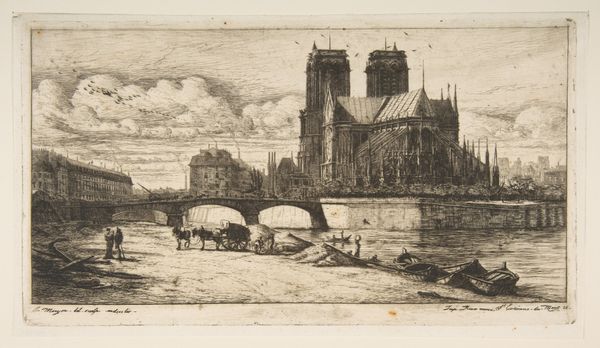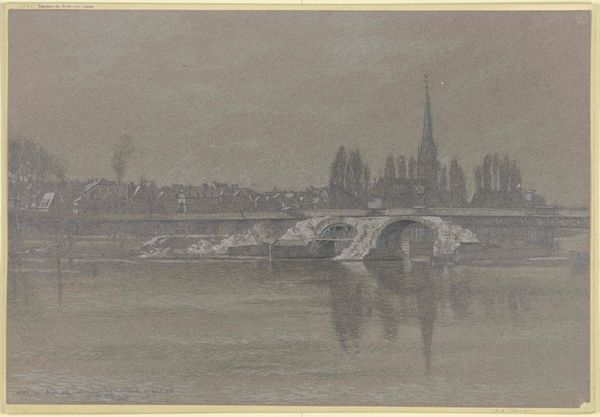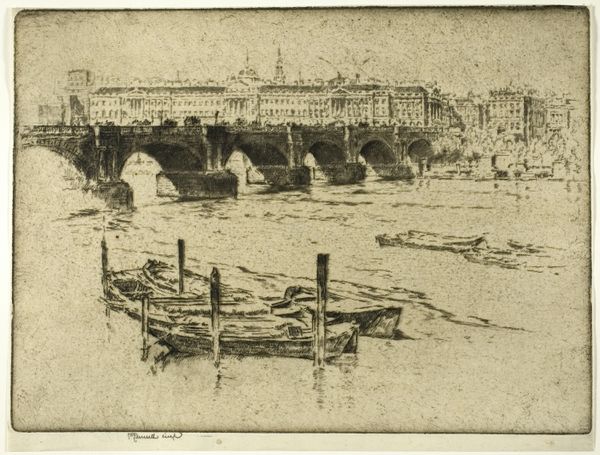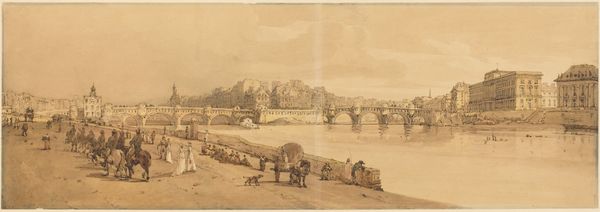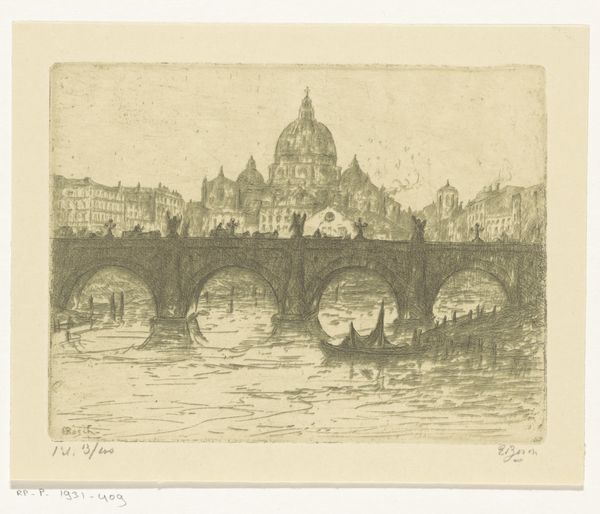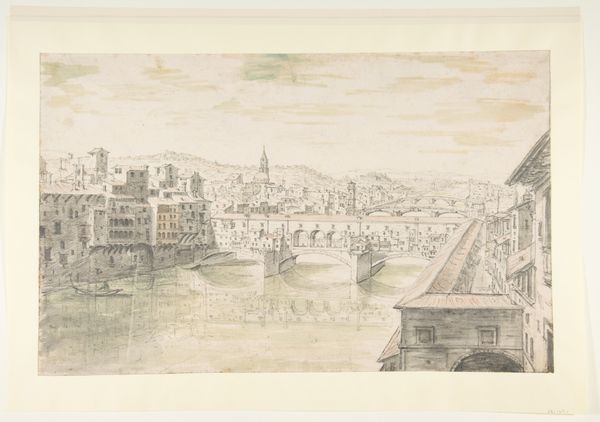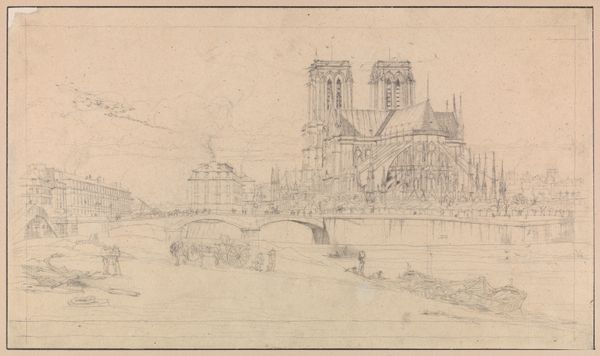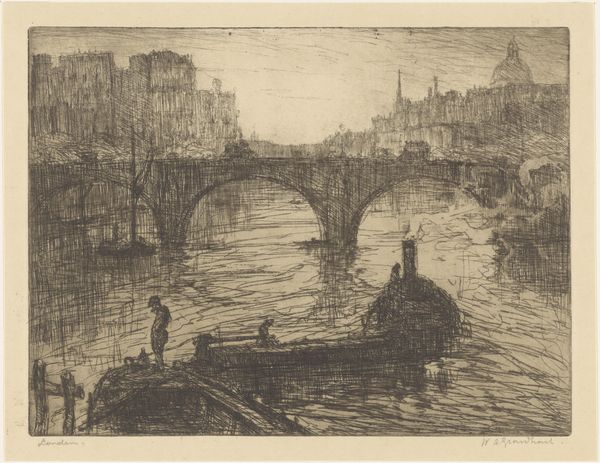
View of Pont de la Tournelle and Notre Dame Taken from the Arsnel: pl.11 Possibly 1802
0:00
0:00
drawing, print, etching, ink
#
drawing
# print
#
etching
#
landscape
#
etching
#
ink
#
romanticism
#
cityscape
Copyright: National Gallery of Art: CC0 1.0
Editor: This is "View of Pont de la Tournelle and Notre Dame Taken from the Arsenal," thought to be from 1802, by Thomas Girtin, using etching and ink. It has this delicate, sepia-toned feel. What really jumps out to me is how serene the city looks. How do you interpret this work? Curator: The serenity you observe is interesting given the revolutionary period that preceded it. But look at the prominence of Notre Dame in the center. It acts as a constant, a symbol of endurance and spiritual continuity, almost defying the chaos of recent history. How do you think the artist uses the river? Editor: I guess it's like a mirror, reflecting and maybe calming everything down? Curator: Precisely. Water often signifies purification and transition. Note also the bridge, a powerful symbol connecting different realms, both physical and metaphorical, suggesting a pathway between the earthly and the spiritual. Are you noticing other details that suggest the city is returning to life? Editor: Well, there are some figures near the shore, so people are moving around and working. Curator: Yes. Girtin presents a Paris marked by recent upheaval, yet resilient. The etching emphasizes the lasting architectural and symbolic power rooted in the cityscape. Considering the history and the artist's choices, do you still see only serenity? Editor: Maybe "hopeful serenity" is more accurate now that I think about all those layers of meaning. Curator: It’s about holding onto history and symbols even while things change; a quiet but potent message. I am glad we were able to consider those shifting, multiple registers together.
Comments
No comments
Be the first to comment and join the conversation on the ultimate creative platform.


